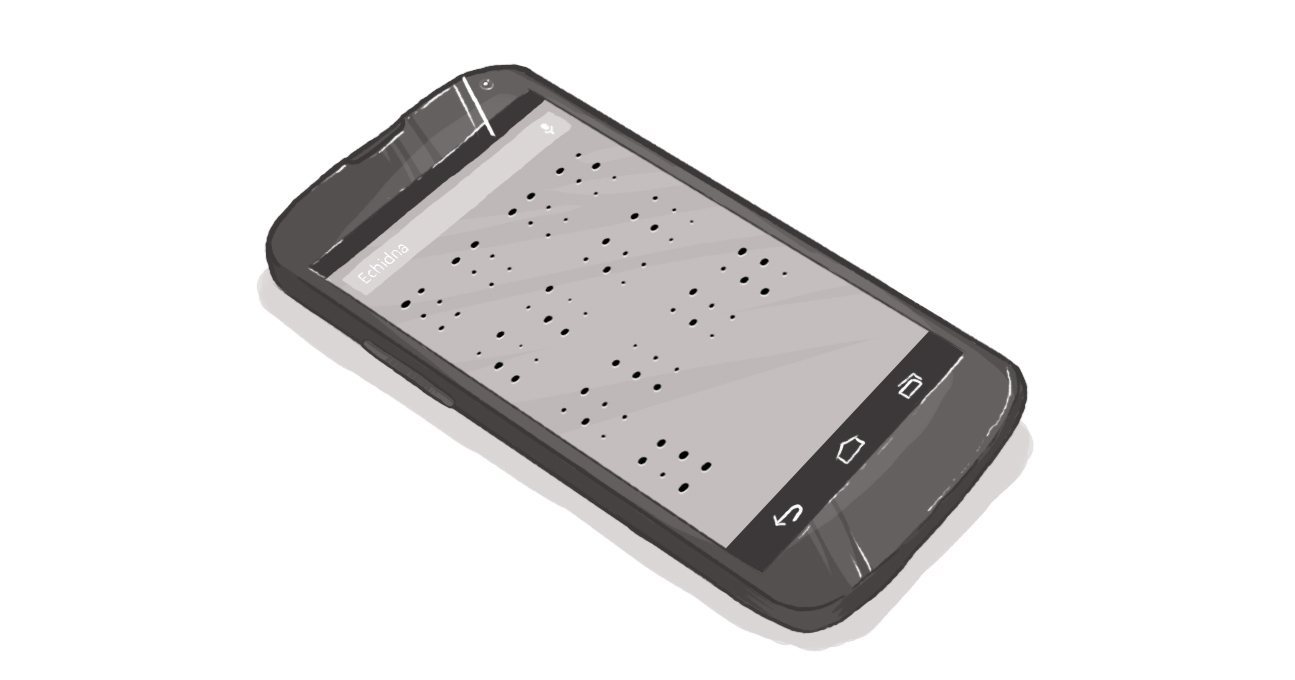Bubble, Bubble, is the iPad for the Blind Worth the Toil and Trouble

A tablet billed as "the iPad for the blind" featuring liquid-bubble Braille output is intriguing, but is it appealing to a niche that may not be there?
The idea of the Blitab Tablet piqued my interest. It has a screen with Braille output using liquid bubbles.I am not sure how input is handled. It's still in the prototype stage but could be on the market in September 2016 should investments come through.
Braille devices are nothing new, nor is the seemingly constant stream of ideas and technologies to assist the blind in everyday aspects of life which we may or may not require assistance with. Naturally I was dubious about yet another device, and I'd still like to get my hands on such a tablet before getting overly excited about its possibilities, but it is an intriguing concept.
Firstly, the tablet will have several lines of Braille at once, and the developers boast that it can translate any document instantly into braille. All current market options are single-line displays, where a reader must scroll along forty characters at a time. Reading from a tablet the same way I'd read from a piece of paper is pretty compelling, especially for spatial concepts such as matrices and long division. Technology is pretty good now at instant print-to-Braille translation, but having another device which has this capability will always be welcome.
The device's construction is pretty interesting too. Currently Braille displays use pins for each dot, and must be cleaned with compressed air as small particles can get stuck in the unused ones. If this Blitab tablet can just be wiped clean, this will make maintenance easier.
For the first time, users will be able to read and understand graphs and images without third-party production, given the full-page display size of this tablet. This is pretty great for educational purposes, but might make reading Google Maps possible too.
I appreciate that the developers address Braille literacy as something this device might assist with. Though I'm not certain it will be a magic cure for declining Braille literacy rates, it will certainly make Braille in the digital age more practical. If it is easier to see how Braille and technology can be streamlined and the output device looks like a full sheet of paper and doesn't cost as much as Braille displays on the market, perhaps Braille will become more widely accepted. The reality is though that most people who go blind do so later in life and don't learn Braille as adults or seniors, so this positive affect may be over-stated.
I have two main reservations with this device. The first is practical; the second more ideological.
Practically speaking, this is not the first device to be put forward as a solution to single-line Braille displays. But all its predecessors have run out of funds before hitting the market. I hope this is a success, but I worry it will also have a similar fate.
Secondly, I am concerned at the niche market nature of this device. Unlike scanning and optical character recognition technology for easier electronic reading or hand-held Global Positioning Systems for easier navigation – both of which benefit the blind and sighted communities alike -- there isn't really a mainstream use for a device with tactile bubbles. Many adaptive technologies specific to the blind already faces criticism for lagging behind in functionality relative to mainstream products. Blind-specific products, given their small market share, will necessarily be higher-priced than mainstream alternatives.
Though the intention is to make these devices affordable, the estimated $2,802 USD is still quite high for a tablet. Not to mention that mainstream tablets still work pretty well for many blind users – the headline proclaiming the Blitab tablet as the "iPad for the Blind" is odd given that the "iPad for the sighted" works just fine.
It would take a lot for someone to decide to switch from a device they knew to an electronic unknown, no matter how interesting the concept behind it. I am concerned that, like so many devices before it, this one is something created with the best of intentions but with an imperfect understanding of the needs of the blind community. I hope I am wrong.
All in all it seems to be a device worth considering. I wish the developers well in their endeavours and hope to hear more about this device in the future.
What kind of Braille displays are available on phones?
SUBSCRIBE TO OUR E-NEWSLETTER
 Subscribe
Subscribe


